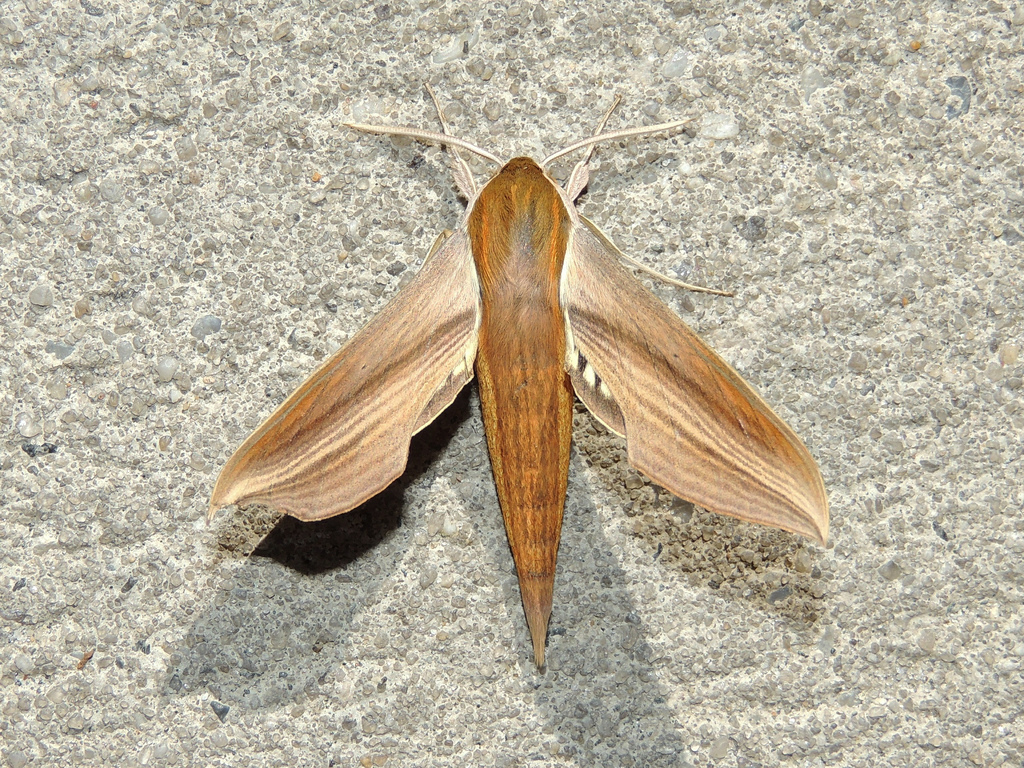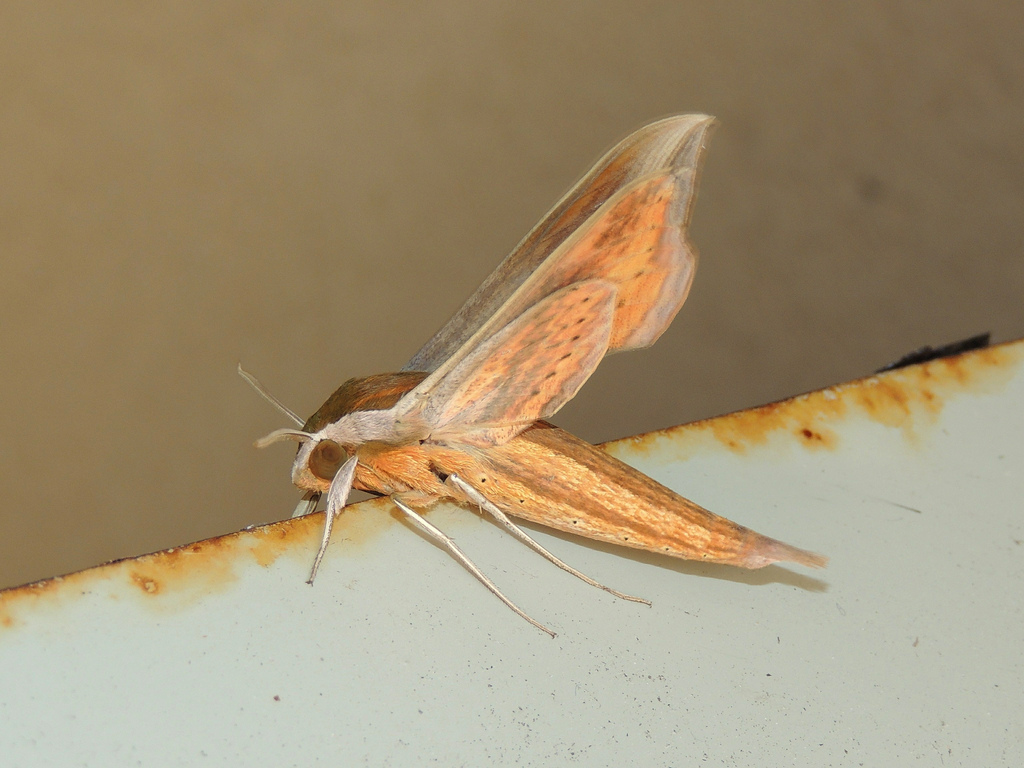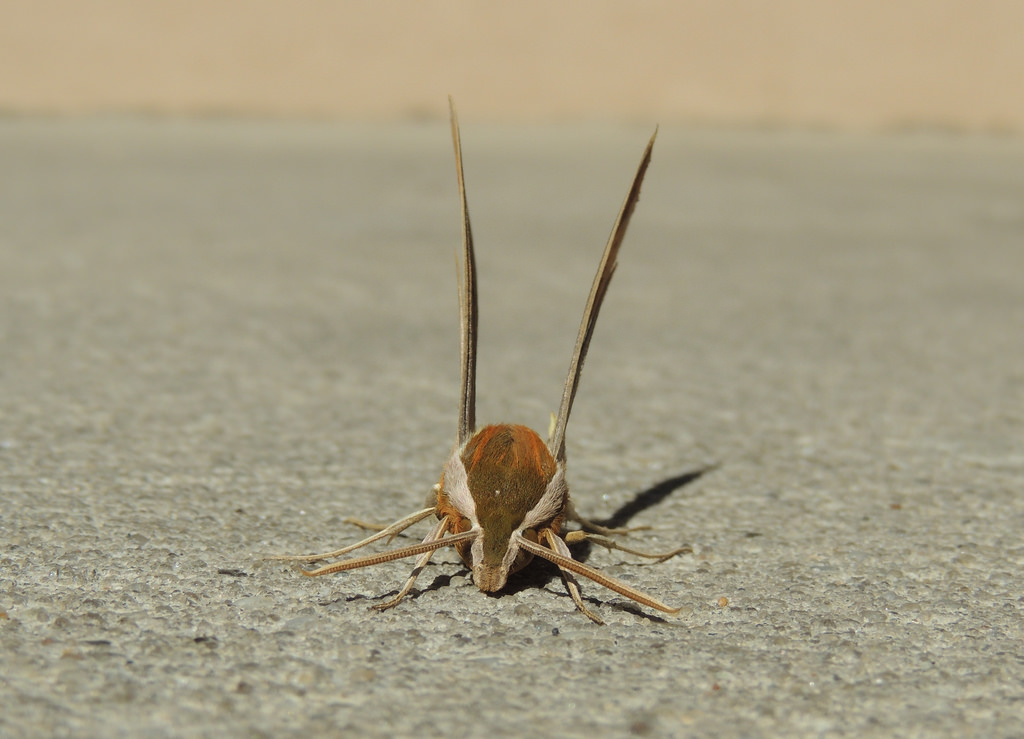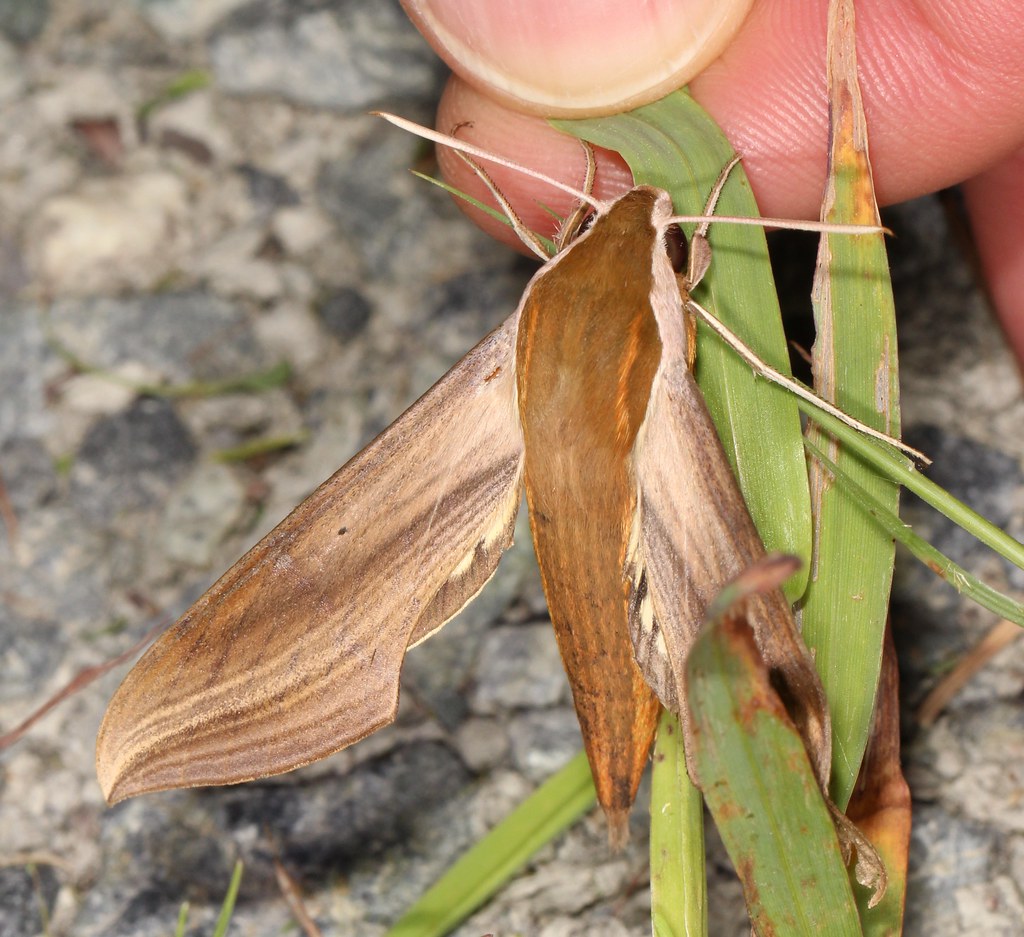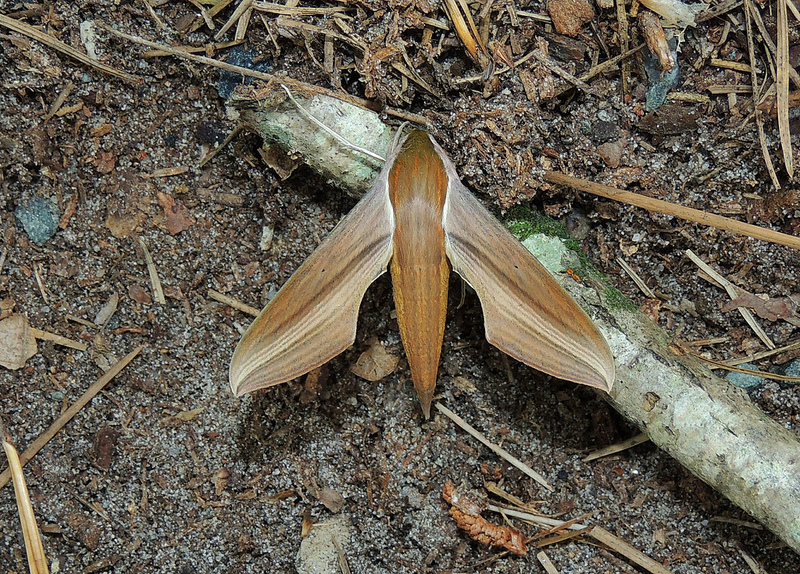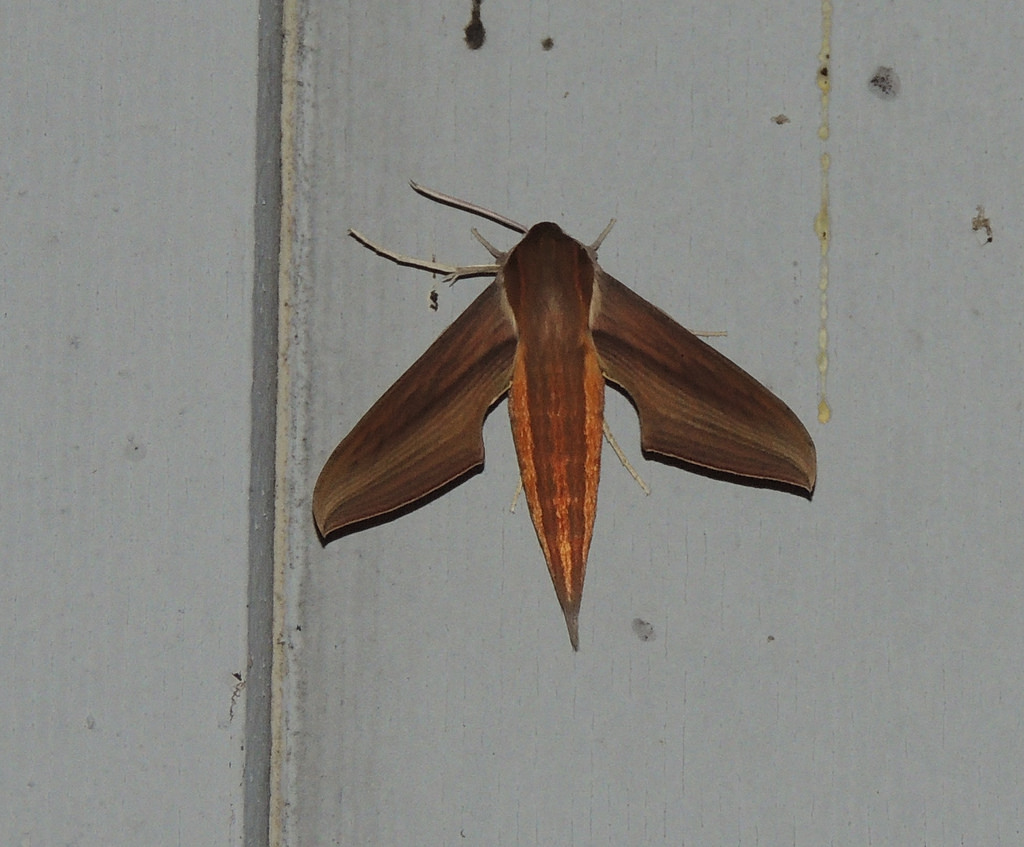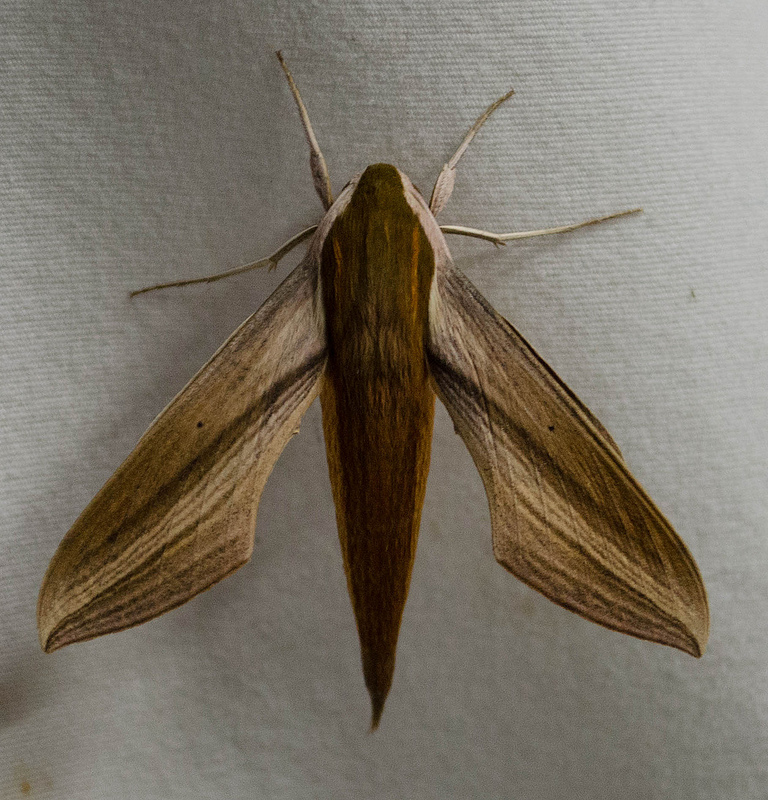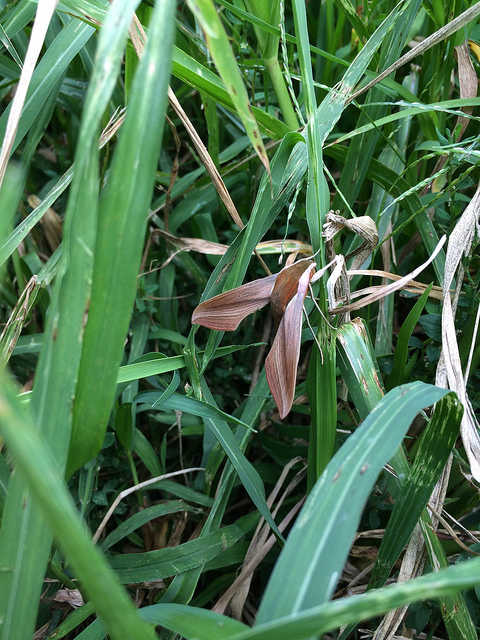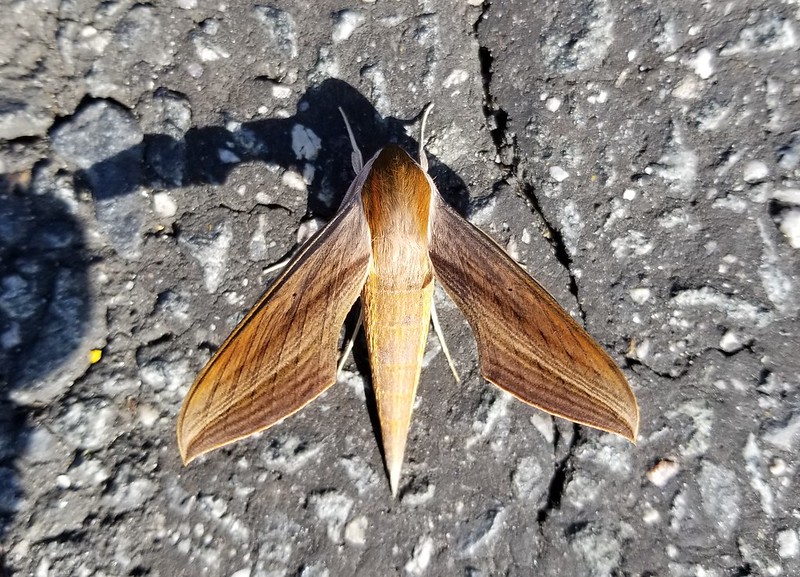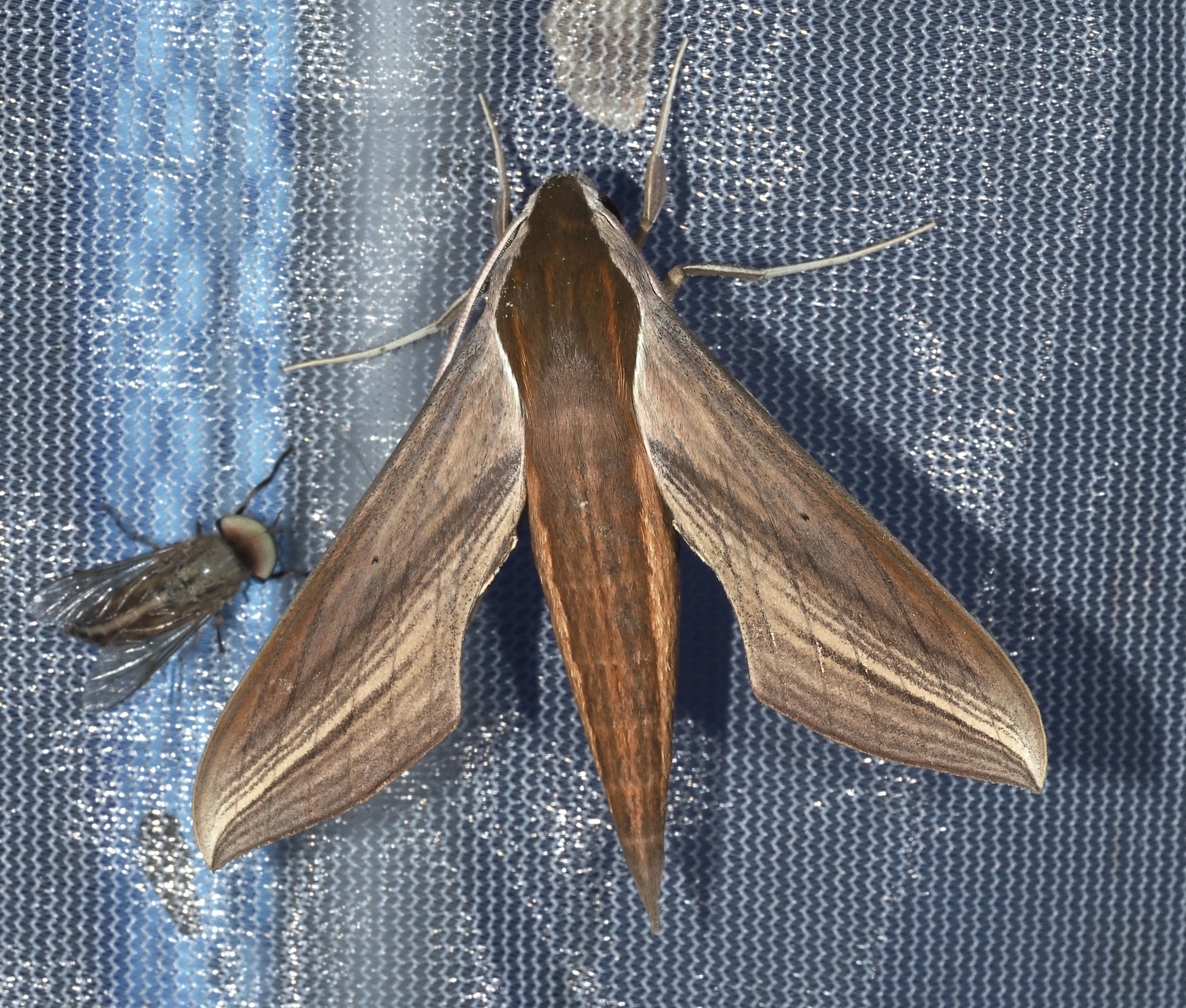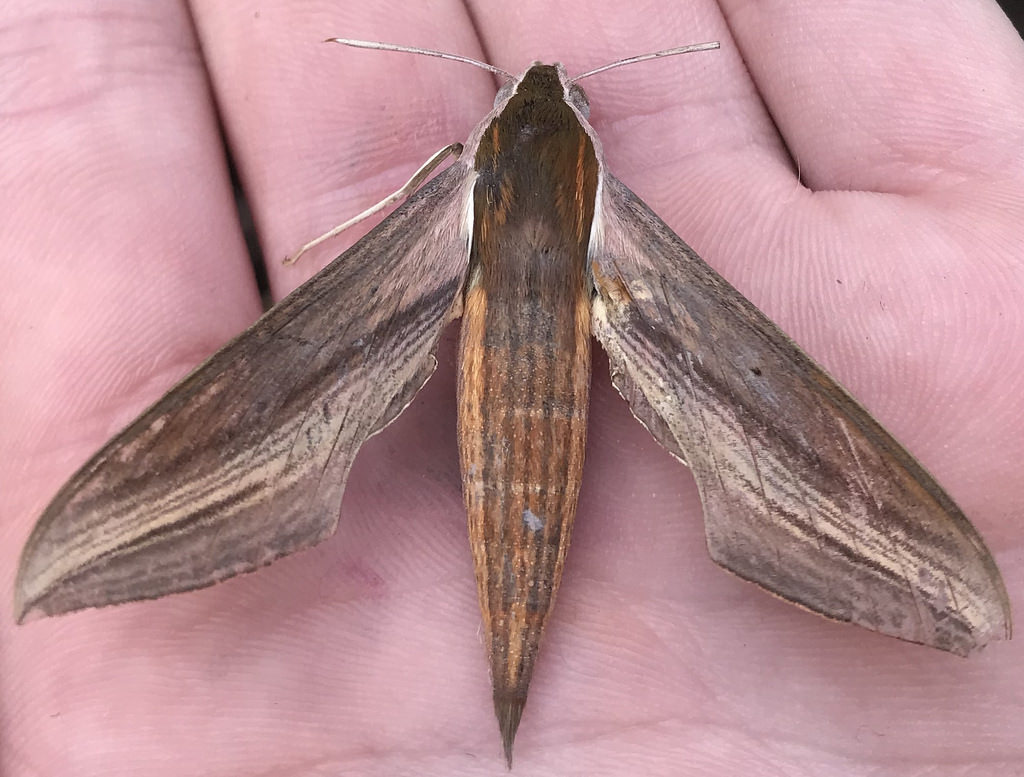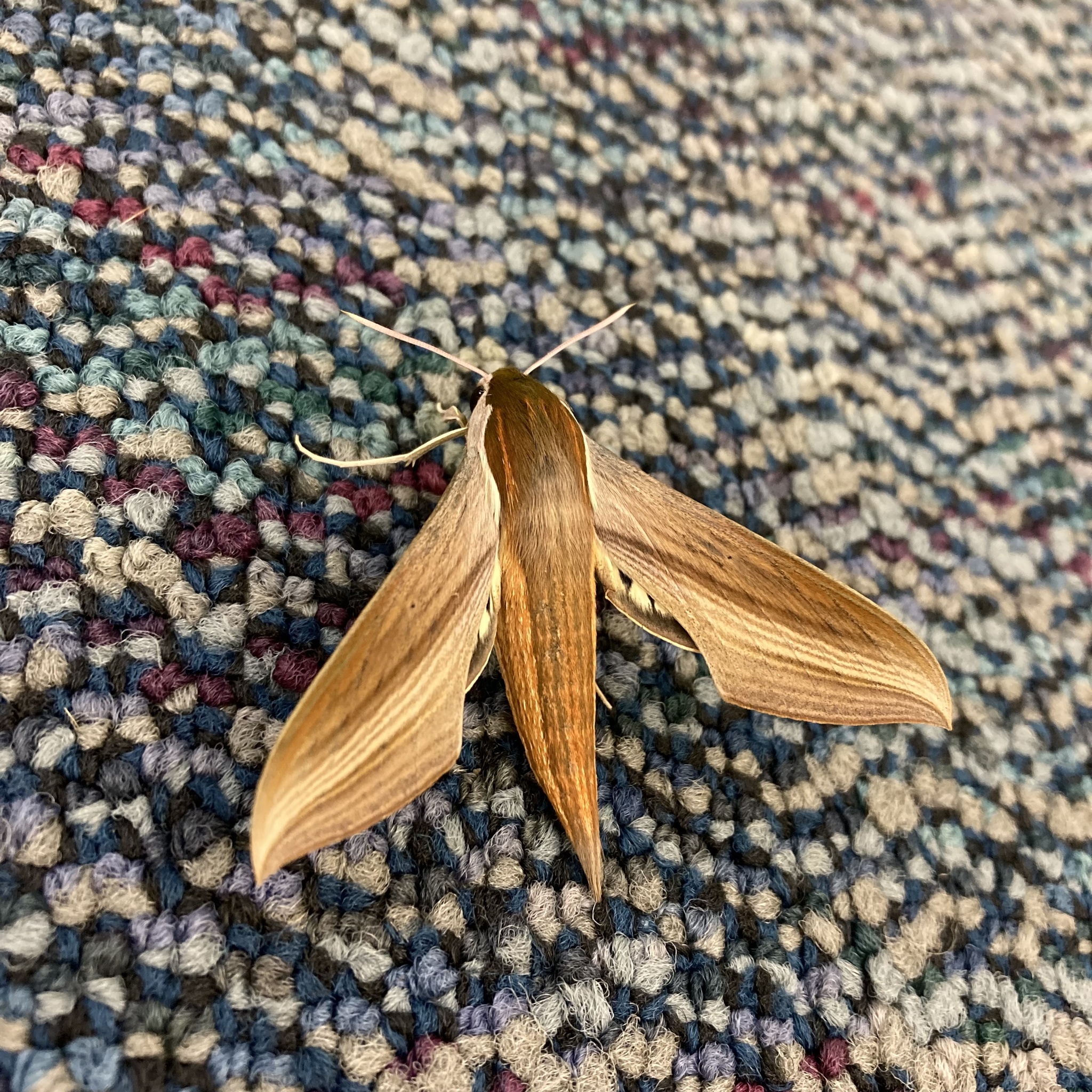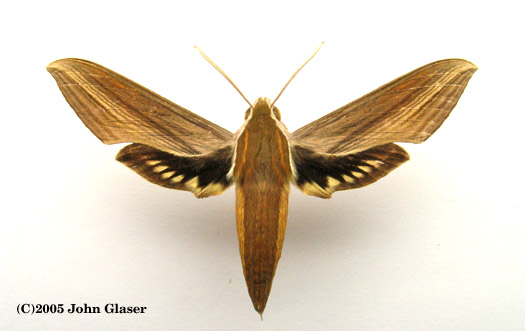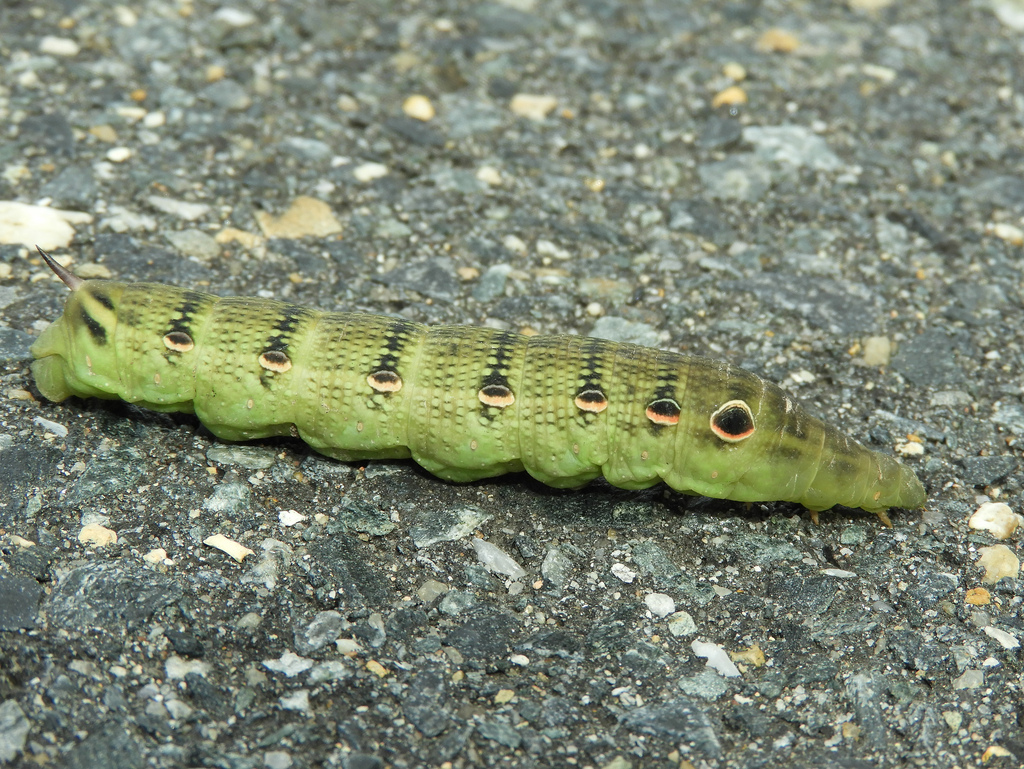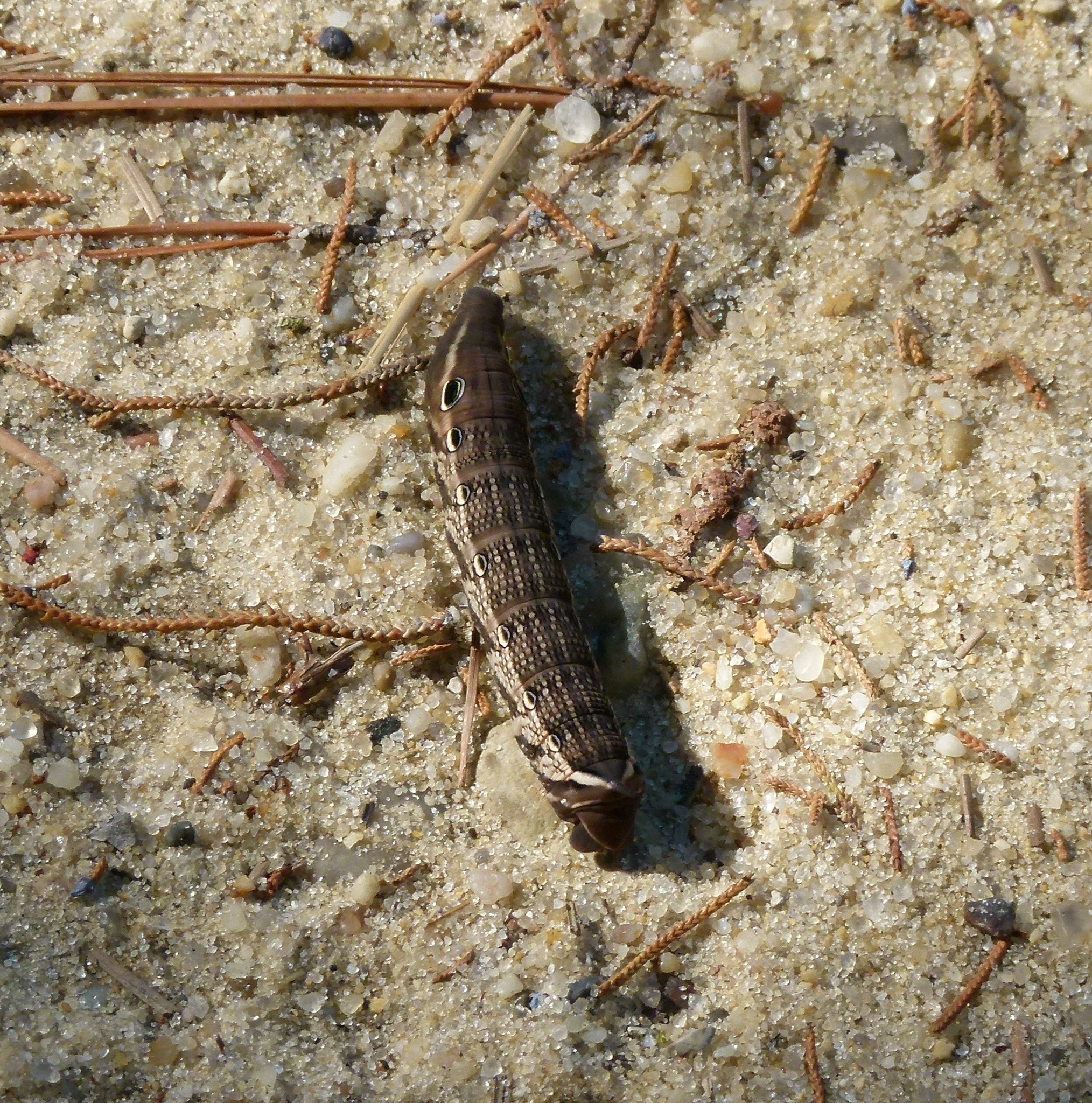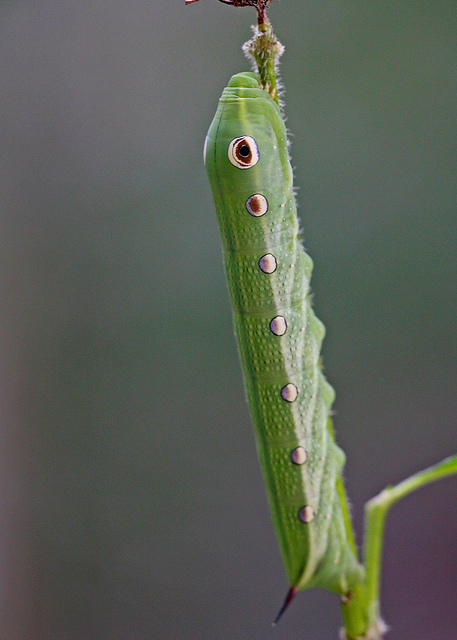Map Snapshot



















56 Records
Relationships
Host plants include Poorjoe, Smooth False Buttonweed, Catalpas (Database of World's Lepidopteran Host Plants). In Nebraska Tersa Sphinx larvae have been found on Common Buttonbush (Messenger, 1997).
Seasonality Snapshot
Source: Wikipedia
| Tersa sphinx | |
|---|---|

| |

| |
| Scientific classification | |
| Domain: | Eukaryota |
| Kingdom: | Animalia |
| Phylum: | Arthropoda |
| Class: | Insecta |
| Order: | Lepidoptera |
| Family: | Sphingidae |
| Genus: | Xylophanes |
| Species: | X. tersa
|
| Binomial name | |
| Xylophanes tersa | |
| Synonyms | |
| |
Xylophanes tersa, the tersa sphinx, is a moth of the family Sphingidae. The species was first described by Carl Linnaeus in 1771. It is found from the United States (Massachusetts south to southern Florida, west to Nebraska, New Mexico and southern Arizona), through Mexico, the West Indies and Central America and into parts of South America (including Bolivia, Paraguay, Argentina and Brazil). An occasional stray can be found as far north as Canada.
The larvae feed on Borreria, Catalpa, Manettia, and Pentas species, and Spermacoce glabra, Hamelia patens, Hedyotis nigricans, Heimia salicifolia, Psychotria microdon, Psychotria nervosa, and Inga vera.
Subspecies
[edit]- Xylophanes tersa chaconi De Marmels, Clavijo & Chacín, 1996 (Venezuela)
- Xylophanes tersa tersa
References
[edit]- ^ "CATE Creating a Taxonomic eScience - Sphingidae". Cate-sphingidae.org. Archived from the original on 2012-11-05. Retrieved 2011-10-25.
External links
[edit]- Xylophanes tersa tersa. Sphingidae of the Americas.
- Lotts, Kelly & Naberhaus, Thomas (2017). "Tersa Sphinx Xylophanes tersa (Linnaeus, 1771)". Butterflies and Moths of North America. Retrieved November 26, 2018.
